Microsoft Ups Its Cool Factor With These 10 Far-Out R&D Projects
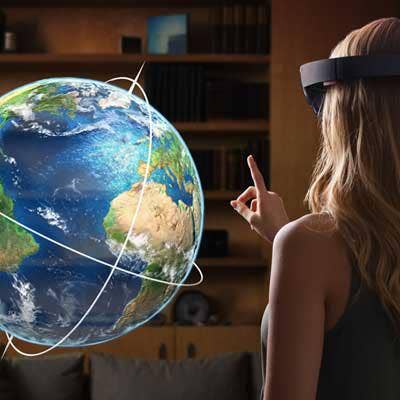
Back In The Lab
Microsoft isn't flashy when it comes to its research and development. Google has its autonomous cars and Facebook has low-Earth orbit Internet balloons. Meanwhile, Microsoft's R&D is less about blowing minds and more about turning boxed software such as Office into a cloud service.
But CEO Satya Nadella is trying to change that, publicly stating that Microsoft needs to be more like Google when it comes R&D. After all, Microsoft's annual R&D budget in 2014 was $10 billion, compared with Google's $8 billion.
That's why we decided to crack the door on Microsoft's R&D business. What we found was technology that packs a serious wow factor. For starters, you've heard about Microsoft's high-profile HoloLens. Those are Microsoft's augmented reality glasses that can place interactive objects in your field of view. Microsoft says the HoloLens will have practical applications include industrial and architectural design, telemedicine and education, along with gaming -- of course
Here are 10 more head-turning Microsoft R&D projects.
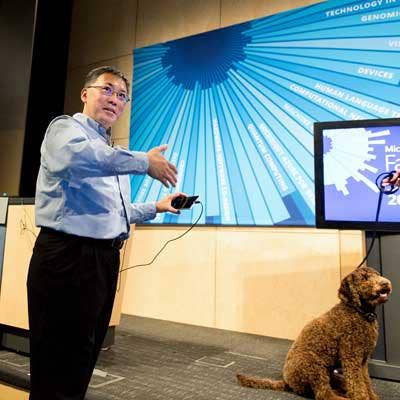
Project Adam: Microsoft's Deep Learning IA Project
Project Adam's goal is to enable software to visually recognize any object. It's harder than you think, given the complexity of not only objects, but defining specifically what type of object you are looking at. Is it a cup, mug, glass, shot glass or wine glass?
Pictured here is a demonstration of Microsoft's artificial intelligence (Adam) trying to not only identify that this is a dog, but what breed of dog. The goal? Microsoft wants us to be able to point our smartphone at any object and ask, "What am I looking at?"
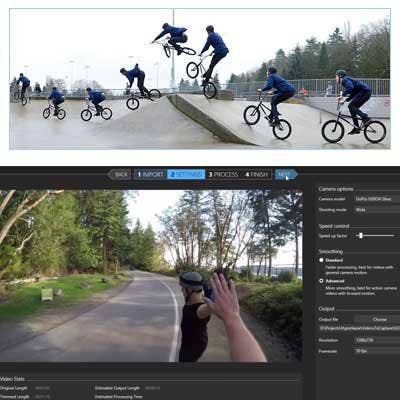
Turning Time-Lapse Into Hyperlapse Video
Hyperlapse is a Microsoft technology uniquely aimed at the smartphone crowd allowing you to capture a bike ride, ski run or joy ride in a car and turn it into a smooth and slick time-lapse video. While it is still in development, Microsoft has released a mobile version of the app called Hyperlapse Mobile (available on Android and Windows Phone). Microsoft has also released a pro version called Hyperlapse Pro Preview that allows you to convert existing herky-jerky first-person videos into stabilized time-lapse videos via desktop software.

Sewage-Powered Microsoft Data Center
For over a year, Microsoft has been running an experimental data center in Cheyenne, Wyo., that will use raw sewage as a power source. (Insert your off-color jokes here.) Microsoft claims the data center is the first of its kind in North America to use sewage to power its servers.
The data center will use waste from a nearby processing plant to create the zero-carbon data center. Microsoft uses the bio-gas created from sewage to charge fuel cells to power the data center. Excess heat from the data center will in turn be sent back to the treatment plant to help heat up sewage in order to aid in the anaerobic digestion of waste matter to create methane faster.
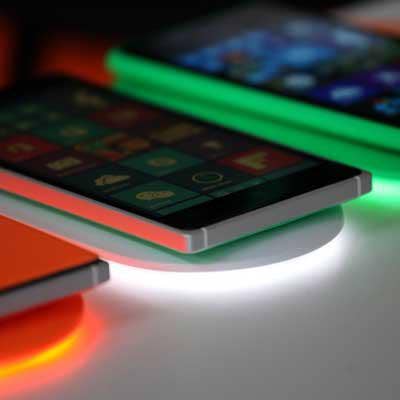
AutoCharge: Beam Me Down A Charged Cellphone
The Holy Grail for any mobile device maker is to make charging any device a nonevent. Microsoft Research is working on a technology that uses concentrated light and a solar panel of sorts on a smartphone (or device) to make charging your phone as easy as putting it on a table.
Here is how it works: The AutoCharge system consists of a light and a sensor that can detect when an AutoCharge-enabled device is nearby. If it senses an AutoCharge-able device, it will generate a tiny concentrated light beam to a tiny solar panel that can harvest the light energy on the device.
The technology competes with various wireless charging technologies such as magnetic resonance and magnetic induction that use magnetism to transmit power from energy source to device.
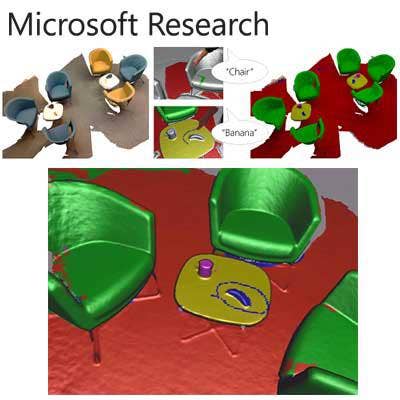
Kinect Helps Artificial Intelligent Agents 'See'
Microsoft is pioneering a technology that allows artificial intelligence systems to "see" their environment, map it and color it. Called Semantic Paint, the technology merges Microsoft's Kinect camera technology with an augmented reality technology. The result is a system that can scan an environment, create a 3-D map of it and then "paint" discrete items each with a distinct color.
Microsoft says the research will lead to better visual recognition for robots and security systems or help people with impaired vision. Other practical applications include improved augmented reality experiences and potentially be part of commercial interior design applications.
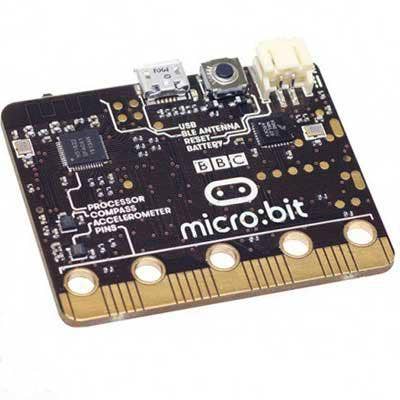
Microsoft And BBC Go Macro With Micro:bits
Microsoft's Micro:bit platform is similar to Rasberry Pi, Beaglebone Black and Intel's new Edison computer platforms. Each of these code-able and extremely affordable computers are aimed at the maker community, known for their love to tinker with technology. The pocket-sized Micro:bit boards are unique, however, and will be given out to more than 1 million U.K. children ages 11-12 as part of a long BBC educational tradition that dates back to 1981, whereby U.K. children are given simple computers as a way to encourage digital literacy.
Microsoft's involvement will also include access to an Azure-based virtual simulator through which kids can program their Micro:bits in the cloud and download the instructions to their computers via a Web browser interface.
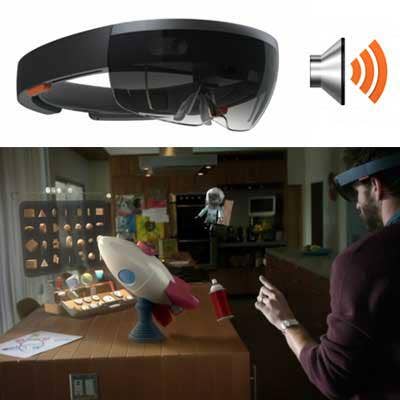
3-D Audio Means Hearing Objects Around You
The goal of 3-D Audio development by Microsoft is to give virtual objects a voice. The desired result, according to Microsoft, is that when you are exploring a virtual environment and a virtual object makes a noise behind you (or anywhere), you sense the sound is actually occurring from a specific direction and from an actual object.
The technology is clearly aimed at the growing number of virtual reality goggles and games that are just about to hit the market.
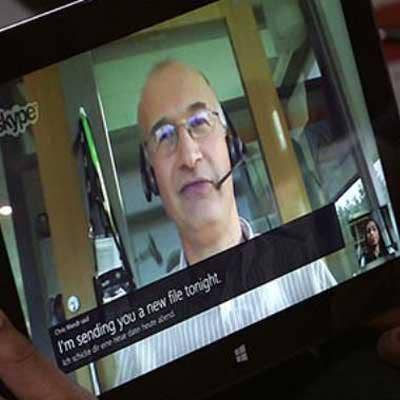
Translate: Traducir: Übersetzen: Tradurre
Microsoft has been working hard at breaking down language barriers with the development of a "universal translator." The technology, derived from decades of research in speech recognition, automatic translation and machine learning technologies, has the goal of allowing for real-time language translation.
The commercial application is called Skype Translator, and it is being jointly developed by the Skype and Microsoft teams.
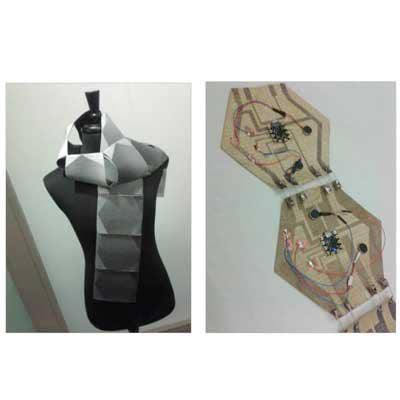
Microsoft's Magic Scarf
Microsoft has created a prototype scarf full of sensors the company says can soothe the stressed, assist people with autism and increase the awareness for the visually impaired. The scarf, called SWARM (Sensing Whether Affect Requires Mediation), consists of hexagon-shaped modules of industrial felt with conductive copper taffeta on top, with some of the modules able to heat up and others able to vibrate.
Microsoft researchers say the scarf is designed to be paired with biometric- and emotion-sensing devices. Some scenarios include the scarf gently warming when it senses the wearer is getting stressed or the scarf vibrating, alerting the sight-impaired of something coming within a certain proximity.
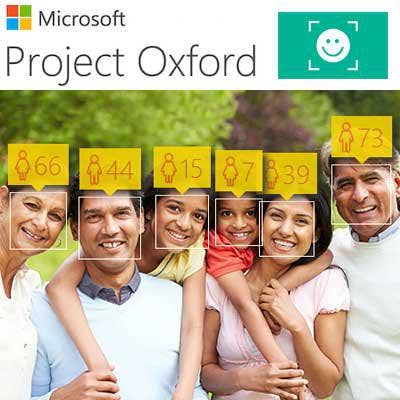
How Old Are You?
You may remember Microsoft's viral hit How-Old.net that tried to guess your age based on a picture of you. The technology behind the website was part of a larger research project called Project Oxford. The site merely served as a proof of concept for an API Microsoft was developing. The research project is designed to help developers build more intelligent apps for facial recognition and other machine learning tasks.
As Microsoft notes on its research page Project Oxford: "The visual aspect of the service can sort through thousands of user-submitted photos to identify which ones may contain racy or otherwise inappropriate content, or just identify photos of beach scenes."
Project Oxford isn't just about facial recognition. It also includes speech processing (think speech to text), visual tools (for spotting anomalies that could be offensive), language understanding intelligent service (the meaning of phrases related to app commands -- "stop running" versus "stop" versus "done").